#Student Management System
Text

Efficient Student Management System for Schools and Colleges
Managing student information effectively is crucial for the smooth operation of schools and colleges. An efficient Student Management System (SMS) can significantly streamline administrative tasks, enhance communication, and improve overall educational experiences for students, teachers, and administrators. Here’s how a well-implemented SMS can benefit educational institutions:
Centralized Information Storage
A robust SMS provides a centralized platform for storing all student-related data, including personal details, academic records, attendance, and extracurricular activities. This centralization ensures that information is easily accessible and up-to-date, reducing the chances of data duplication and errors.
Streamlined Administrative Tasks
Administrative tasks such as admissions, fee collection, timetable scheduling, and examination management can be time-consuming and prone to errors when handled manually. An efficient SMS automates these processes, allowing staff to focus on more critical tasks. Automated notifications and reminders can also help in keeping students and parents informed about important dates and deadlines.
Enhanced Communication
Communication between students, parents, teachers, and administrators is vital for the successful functioning of any educational institution. An SMS offers multiple communication channels, including emails, SMS, and in-app notifications, ensuring timely and effective communication. This helps in addressing issues promptly and maintaining a transparent relationship among all stakeholders.
Improved Attendance Tracking
Tracking student attendance manually can be cumbersome and inaccurate. An SMS simplifies this process by enabling digital attendance tracking. Teachers can mark attendance using their devices, and the system can generate reports and alerts for irregular attendance patterns. This not only saves time but also helps in identifying and addressing attendance issues early.
Academic Performance Monitoring
Monitoring student academic performance is essential for identifying areas where students need support. An efficient SMS provides tools for tracking grades, generating report cards, and analyzing performance trends. Teachers can easily input grades and comments, and parents can access this information to stay informed about their child’s progress.
Resource Management
Managing resources such as classrooms, libraries, and laboratories is another critical aspect of educational administration. An SMS helps in efficient resource allocation by providing scheduling tools and tracking resource usage. This ensures optimal utilization of available resources and reduces conflicts and overlaps.
Data Security and Privacy
Protecting student data is of paramount importance. A reliable SMS includes robust security measures to safeguard sensitive information. Role-based access controls ensure that only authorized personnel can access specific data, and regular backups prevent data loss.
Scalability and Customization
As schools and colleges grow, their administrative needs evolve. A good SMS is scalable and can accommodate increasing amounts of data and users. Additionally, it should offer customization options to tailor the system to the specific needs of the institution.
In conclusion, an efficient Student Management System is a valuable investment for schools and colleges. It not only streamlines administrative processes but also enhances communication, improves attendance and performance tracking, and ensures data security. By adopting a robust SMS, educational institutions can create a more organized, efficient, and supportive environment for students and staff alike.
0 notes
Text
Announcing the WPSchoolPress School Management System Plugin: a highly functional new solution whose goal is to enhance the organization of a school. Optimize your business functions, improve organizational efficiency and increase the effectiveness of your undertakings with this streamlined Student Management WordPress Plugin, designed for your institution’s specific needs.
#School Management System Plugin#Student Management Wordpress Plugin#school management plugin#student management system
0 notes
Text
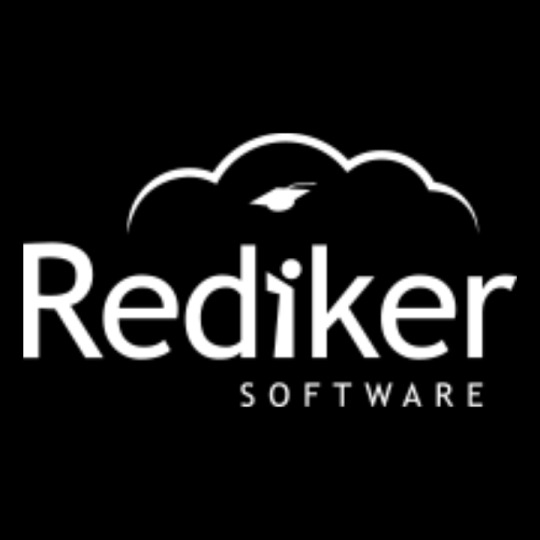
School management software for K-12 schools around the world. Created by educators for educators, Rediker Software provides solutions for school management, admissions, and school-to-home communication for 45 years. The AdminPlus SIS includes web gradebooks, parent and student portals, mobile apps, demographics, attendance, report cards, schedule building, mass notifications, and more, in one affordable, easy-to-use system. We understand the unique needs of Independent K-12 Schools and offer experience, reliability, and features not found in other systems.
0 notes
Text
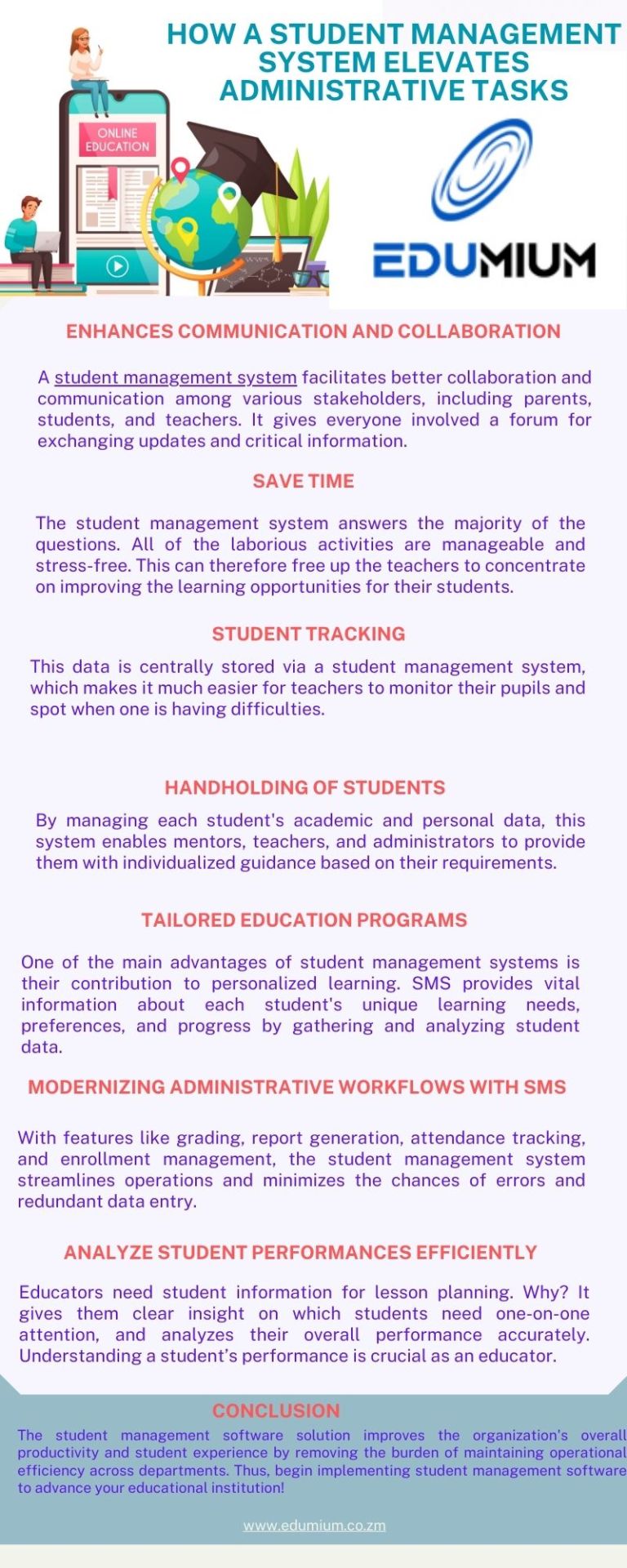
Enhancing Administrative Processes with a Student Management System
Effective communication is essential for every organization to succeed in the fast-paced world of today. In educational institutions, effective communication among students, parents, teachers, and staff is essential to meeting academic objectives and fostering a supportive learning environment. However controlling communication may be difficult, particularly when there are a lot of parties involved. Thankfully, student management systems have made this process easier thanks to technology.
0 notes
Text
Enhancing Administrative Processes with a Student Management System
Effective communication is essential for every organization to succeed in the fast-paced world of today. In educational institutions, effective communication among students, parents, teachers, and staff is essential to meeting academic objectives and fostering a supportive learning environment. However controlling communication may be difficult, particularly when there are a lot of parties involved. Thankfully, student management systems have made this process easier thanks to technology.
An essential component of any educational establishment is student administration. Keeping track of student information is a difficult task that calls on accuracy and efficiency in everything from enrollment and admissions to grading and attendance. Software for student administration can be useful in this situation. With the help of sophisticated tools like student management software, educational institutions can concentrate on delivering high-quality instruction and enhancing student results while streamlining numerous administrative procedures.
The School Management System is now necessary for educational institutions due to the shifting demands of the academic period. All educational institutions, including colleges and coaching centres, as well as schools, require some sort of equipment. Systems or software that make their daily tasks easier, or more accurately, simplify them, are referred to as tools.

What a Student Management System Does?
A Student Information Management System (SIS) is another name for a Student Management System (SMS). All student data is arranged and coordinated by this cutting-edge software through a single, centralized data management system that is available to all departments. Teachers can enter, maintain, and access student data using an on-premise or cloud-based student management system, and the school can comply with regulatory requirements. This all-inclusive software program organizes and maintains administrative procedures and data about students. It serves as a hub for all information about students. Institutions can effectively handle and retrieve data about enrollment, grading, scheduling, reporting, and admissions.
How a student management system elevates administrative tasks:
Enhances communication and collaboration
Save Time
Student Tracking
Handholding of students
Tailored Education Programs
Modernizing Administrative Workflows with SMS
Analyze Student Performances Efficiently
Productivity and Efficient Management
Assists in building a strong alumni
Enhances communication and collaboration:
A student management system facilitates better collaboration and communication among various stakeholders, including parents, students, and teachers. It gives everyone involved a forum for exchanging updates and critical information. For example, parents can use the system to monitor their child's progress and teachers can use it to exchange study materials and tasks with students.
Save Time:
Principals, educators, and even parents may save a great deal of time with this useful tool. The student management system answers the majority of the questions. All of the laborious activities are manageable and stress-free. This can therefore free up the teachers to concentrate on improving the learning opportunities for their students.
Student Tracking:
Education transcends the confines of the classroom. Details about a student's home life are often included, along with information on extracurricular activities like clubs and sports. This data is centrally stored via a student management system, which makes it much easier for teachers to monitor their pupils and spot when one is having difficulties.
Handholding of students:
Providing timely and individualized student support services can be facilitated by utilizing a student management system. By managing each student's academic and personal data, this system enables mentors, teachers, and administrators to provide them with individualized guidance based on their requirements.
With this method in place, teachers can keep a close eye on their students' development and ensure that they are staying ahead of any obstacles they face over the academic year. This system's student handholding benefits parents as well as teachers since it allows parents to monitor their children's growth and take an active role in choosing their children's educational paths.
Tailored Education Programs:
One of the main advantages of student management systems is their contribution to personalized learning. SMS provides vital information about each student's unique learning needs, preferences, and progress by gathering and analyzing student data. To assist students get better, teachers can utilize this information to modify learning assignments, provide specialized support, and tailor training. Additionally, SMS can be integrated with learning management systems (LMS), giving instructors the ability to create dynamic and flexible lesson plans that accommodate different student requirements and preferences.
Analyze Student Performances Efficiently:
Educators need student information for lesson planning. Why? It gives them clear insight on which students need one-on-one attention, and analyzes their overall performance accurately. Understanding a student’s performance is crucial as an educator. Having access to a student information system that stores information regarding their attendance, grades, assignments, homework, and behaviour reports helps in making their classes productive.
Productivity and Efficient Management:
The productivity of an organization is increased by the student management software or system. The primary drivers of this productivity enhancement are lower maintenance time for track records and more accurate data organization. With less time, the school may concentrate more on increasing organizational productivity and raising the standard of instruction given to students.
Assists in building a strong alumni:
Having a robust student management system makes it easier to expand the alumni network. All educational establishments, including colleges and schools, must effectively manage their alumni network. A network like this can assist the institution with finance, student employment recommendations, and other things. The SMS software can handle your alumni connections with ease and help you create an alumni network. Any future attempts can utilize the centralized and integrated alumni data.
Modernizing Administrative Workflows with SMS:
School administration systems bring about significant savings in labour costs and boost efficiency through their ability to automate various administrative tasks. With features like grading, report generation, attendance tracking, and enrollment management, the student management system streamlines operations and minimizes the chances of errors and redundant data entry.
Conclusion:
The market for student management system software is expanding quickly, offering more chances for interaction between instructors, administrators, and students. Thanks to the constantly improving technology of student management systems, educational institutions may offer enhanced access to student data and facilitate the development of a more customized learning environment. The student management software solution improves the organization's overall productivity and student experience by removing the burden of maintaining operational efficiency across departments. Thus, begin implementing student management software to advance your educational institution!
0 notes
Text
#erp for school#school erp#erp for education#student information system#school management software#school software#education erp software#school management system#student management system#student
0 notes
Text
Choosing the Ideal Student Management System for Higher Education in the Philippines
Introduction:
In the rapidly evolving landscape of higher education in the Philippines, the need for efficient and effective Student Management Systems, sometimes called Student Information Systems (SIS), has become paramount. These systems play a crucial role in streamlining administrative tasks, enhancing communication, and ultimately improving students' and educators' overall educational experience. One prominent solution gaining attention in this context is Academia ERP. This post will explore the critical considerations for selecting the perfect student management system for higher education institutions in the Philippines.
Customization and Localization:
The diverse nature of higher education institutions in the Philippines requires a student management system that can be customized to meet specific needs. Look for a system like Academia ERP that allows for localization, ensuring it aligns seamlessly with Filipino educational institutions' unique requirements and workflows.
User-Friendly Interface:
A user-friendly interface is essential for successfully adopting any student management system. Educators, administrators, and students alike should be able to navigate the platform effortlessly. Academia ERP focuses on providing an intuitive interface, reducing the learning curve, and promoting widespread acceptance across all user groups.
Comprehensive Modules:
An ideal student management system should encompass various modules covering various academic and administrative functions. Features such as enrollment management, attendance tracking, grade management, and communication tools are vital. Academia ERP offers a comprehensive suite of modules designed to meet the diverse needs of higher education institutions.
Scalability:
As educational institutions grow, the chosen student management system should be able to scale accordingly. Academia ERP is built to accommodate the evolving needs of institutions, ensuring scalability without compromising performance.
Integration Capabilities:
Seamless integration with other systems and technologies is crucial for a student management system to function optimally. Academia ERP offers integration capabilities with other software and platforms, facilitating a more connected and efficient educational ecosystem.
Data Security and Privacy:
With the increasing reliance on digital platforms, safeguarding sensitive student and institutional data is paramount. Academia ERP prioritizes data security and privacy, employing robust measures to protect information and ensure compliance with data protection regulations.
Support and Training:
Adequate support and training are essential for successful implementation and ongoing usage of a student management system. Academia ERP provides training resources and a dedicated support team to assist institutions in maximizing the benefits of their platform.
Cost-Effectiveness:
Institutions often operate on limited budgets, making cost-effectiveness a crucial factor in selecting a student management system. Academia ERP offers a competitive pricing model, providing value for money while delivering a comprehensive solution.
Conclusion:
In conclusion, finding the perfect student management system for higher education in the Philippines involves careful consideration of customization, user-friendliness, comprehensive modules, scalability, integration capabilities, data security, support, and cost-effectiveness. Academia ERP emerges as a viable solution that addresses these key factors, promising to enhance the educational experience for both educators and students in the dynamic landscape of Filipino higher education.
0 notes
Text
Streamlining Education: The Power of Student Management and RTO Software
In the dynamic landscape of education and training, the need for streamlined processes is paramount. As educational institutions and Registered Training Organizations (RTOs) strive for excellence, implementing robust systems becomes crucial. This article delves into the world of student management systems, RTO software, and their role in fostering efficient learning environments.
Understanding the Basics
What is a Student Management System?
A Student Management System (SMS) is a comprehensive tool designed to simplify and centralize administrative tasks related to student data. From enrollment to assessment tracking, an SMS ensures a seamless workflow.
Exploring RTO Software
RTO software, specifically tailored for Registered Training Organizations, goes beyond conventional SMS capabilities. It encompasses features like compliance management, Avetmiss reporting, and student resource management.
The Power of Learning Management Systems (LMS)
Unlocking the Potential of LMS in Australia
Learning Management Systems (LMS) play a pivotal role in the educational landscape of Australia. From traditional classroom settings to online platforms, LMS facilitates efficient content delivery and assessment.
Cloud LMS: Navigating the Future
Cloud-based LMS is gaining traction, providing flexibility and accessibility. This innovative approach allows users to access learning materials anytime, anywhere, fostering a more inclusive and adaptive learning environment.
Tailoring Solutions to RTOs
RTO Management System Essentials
RTOs have unique needs, requiring specialized software. A well-integrated RTO management system ensures compliance with regulations, efficient course management, and streamlined assessment processes.
Navigating Compliance with RTO Software Australia
Compliance is a non-negotiable aspect for RTOs. RTO software in Australia is tailored to meet regulatory requirements, offering a secure and compliant platform for managing student data and assessments.
Assessments Made Seamless
Revolutionizing Assessment Management
Assessment management systems (AMS) are indispensable for RTOs. These systems facilitate smooth, efficient, and transparent assessment processes, ensuring accurate reporting and compliance.
Online Assessment Management: A Game-Changer
The advent of online assessment management systems has transformed the educational landscape. These systems offer flexibility, allowing students to complete assessments remotely while maintaining the integrity of the evaluation process.
Choosing the Right System
Factors to Consider in Selecting LMS
Selecting the right LMS is critical. Factors such as user interface, scalability, and integration capabilities should be considered to ensure a system that aligns with the unique needs of your institution.
Top Student Management Systems in Australia
Identifying the best student management system in Australia involves evaluating features, user feedback, and scalability. We explore some of the top contenders that are making waves in the educational technology sphere.
Future Trends and Innovations
The Future of Student Management
As technology evolves, so does the landscape of student management. Artificial intelligence, data analytics, and immersive learning experiences are shaping the future, promising more personalized and effective education.
Conclusion
In conclusion, the landscape of student management systems and RTO software is evolving to meet the dynamic needs of the education sector. From cloud-based solutions to compliance-focused RTO software, institutions have an array of options to choose from. Investing in the right system not only enhances efficiency but also ensures a more enriching learning experience for students. As we navigate the future, embracing these technological advancements becomes pivotal in staying at the forefront of education.
0 notes
Text
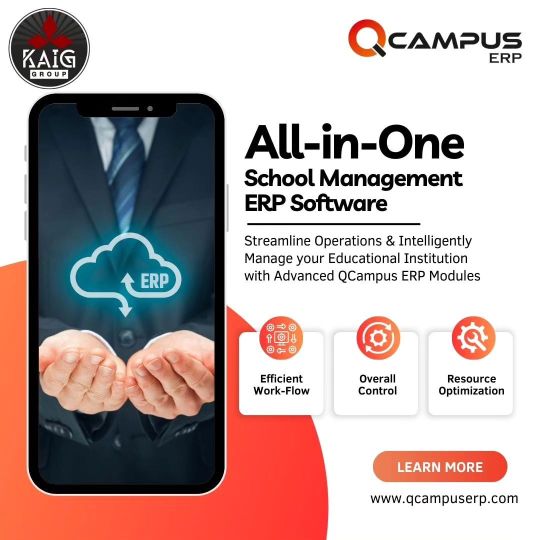
School ERP Software - Student Information System
QCampus is a user-friendly ERP software that offers a comprehensive solution for educational institutions, enabling them to transform student information systems and streamline administration and management, thereby fostering a future-oriented approach.
#school erp#finance management#student management system#admission management system#Academic Planner#hrms software
1 note
·
View note
Text
Welcome to school software, your all-in-one solution for managing and enhancing your school’s administrative tasks and academic processes. Our comprehensive school software offers a range of powerful features designed to streamline your school’s academic and administrative operations, promote collaboration, and improve efficiency for administrators, teachers, students, and parents.
#school erp software#school solution#best school software#school management system#student management system#student management#learning management system#lms development#erp software
0 notes
Text
#school management app#school management software#school management company#edunewron#newron#school management ecosystem#school management system#school management erp#student management system#Student Talent Management
0 notes
Text
From Paper to Digital: Revolutionizing Education with a School Management System
No longer are teachers swamped with piles of paperwork and spending countless hours on administrative tasks. Thanks to school management software, educators can focus on what they do best: teaching and inspiring students. With automated processes in admissions, enrollment, attendance tracking, scheduling, and fee management, teachers can now breeze through tasks that once required extensive manual work. School management software saves valuable time and resources. This allows teachers to concentrate on developing engaging lesson plans, providing personalized attention to students, and helping them achieve their academic goals. By promoting efficiency and automation, educational institutions can create a conducive atmosphere where both teachers and students flourish, making the most of their educational experience.
Benefits of a school management system:
1. Administration Made Easy: Managing a school can be challenging, especially when handling administrative work. A well-organized school system can streamline tasks such as printing ID cards, report cards, attendance sheets, and exam papers, eliminating piles of paperwork. Multiple employees can use the system simultaneously, reducing unnecessary duplication.
2. Parents-Teacher Interaction: School systems facilitate online communication between parents and teachers. This allows parents to connect with teachers without taking time off from work or physically visiting the school. Personal and group discussions can be conducted through the system, enhancing parent-teacher interaction.
3. Posting Homework, Timetables, and Assignments: One of the most valuable features of schooling systems is the ability for teachers to post homework, timetables, assignments, holidays, and other relevant information. This enables teachers to directly inform parents about crucial activities and keep them updated on the curriculum. This can be especially helpful for younger children who struggle to communicate schoolwork effectively.
How do these features benefit the entire school system?
1. Save time: By implementing a school management system, schools can save time. Tasks that used to require extensive paperwork can now be completed within minutes using online tools. Sending notes, printing ID cards, and setting exam papers can all be accomplished with a few simple commands, freeing up valuable time for teachers and administrators.
2. Reduce Ambiguity: Running an educational institution involves multiple stakeholders, including parents, teachers, administrative staff, bus drivers, and special assistants. A school system can minimize ambiguity by providing a centralized platform for everyone to receive the latest updates and information. This helps ensure that everyone is on the same page, preventing misunderstandings and confusion.
3. Keeping Parents in the Loop: Parents often worry about school progress. Some schools have tried using cameras in classrooms for this purpose, but this approach has proven counterproductive. A school system, on the other hand, can keep parents informed without invading their children's privacy or making them uncomfortable. Parents can stay updated on discussions between teachers and other parents, allowing the child to learn and make mistakes in a supportive environment.
4. Eco-friendly: In addition to benefiting school operations, a schooling system is also environmentally friendly. Schools can significantly decrease paper consumption by reducing paper-based processes, such as attendance sheets and other school documents. All information can be accessed through mobile phones or computers, reducing paper use and contributing to tree preservation.
5. Easy Access to Information: School Management Systems provide a convenient way to access information compared to traditional paper-based systems. Instead of sifting through piles of files, users can simply log on to the system. They can enter relevant keywords, and access everything from their child's class timetable to academic results.
These features are becoming more accessible, and parents can look forward to a more convenient and efficient experience. Embrace technology advancements and enjoy school system benefits.
How Can a School Management System Ensure Data Accuracy and Security?
Ensuring data security and accuracy is crucial. When it is stored digitally, it provides a higher level of security for data in schools than paper records. School management systems centralize and automate administrative tasks in educational institutions. It provides functionalities for managing student information, academic records, attendance, scheduling, communication, and more. School management systems employ various measures to protect sensitive data and ensure overall security.
Data security in a school management system involves multiple layers of protection. Firstly, the system incorporates access controls, where user roles and permissions are defined to restrict access to sensitive data. This ensures that only authorized personnel can view or modify specific information, reducing data breach risk.
Encryption is another crucial aspect of data security. The system utilizes encryption techniques to convert data into an unreadable format during transmission and storage. This adds an extra layer of protection, preventing unauthorized access to sensitive data even if intercepted.
To maintain data integrity, the system enforces validation rules and constraints. This ensures that data entered into the system meets predefined criteria and remains consistent and accurate. By eliminating data inconsistencies or errors, the system helps maintain student records, grades, and other relevant information.
Regular data backups are essential for data security and disaster recovery. The system incorporates automated backup mechanisms to periodically create copies of data. In case of data loss or system failure, these backups can be utilized to restore the information to a previous state, minimizing the impact and ensuring data availability.
Additionally, the school management system may implement audit trail functionality. It records user activities and changes made to the system, allowing administrators to track and monitor any modifications. This feature helps identify any potential security breaches or unauthorized access attempts, enhancing overall data security.
Overall, a school management system prioritizes data security through access controls, encryption, data validation, regular backups, audit trails, and compliance with privacy regulations. These measures collectively establish a secure environment for managing and protecting sensitive data in educational institutions.
#school management software in Zambia#school management software#school management system in Zambia#school management system#educational software in Zambia#educational software#school ERP software in Zambia#school ERP software#virtual classroom software#online classroom software in Zambia#online classroom software#online school management system#online school management software in Zambia#online school management software#student management system
0 notes
Text
Essential Student Management System Features in School ERP
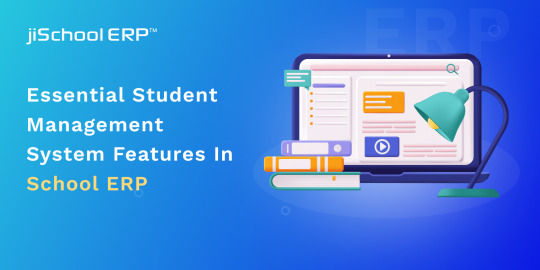
In today’s rapidly evolving educational systems, effective student information management software plays a crucial role in organizing administrative tasks. These programs are highly effective in providing support to students throughout their academic journey. From automating routine operations to providing detailed insights into student performance, a well-designed student management system can offer many benefits for educators, administrators, parents, and students themselves.
Must-have student management system features
A student management system is an efficient software solution for schools to automate and manage their various administrative tasks. Here are a few features that student software must have.
1. Student Information Management: The student management system must be able to store and manage student information securely. This includes basic details such as name, address, contact information, and other details. Additionally, an SMS should create unique student IDs and should be able to track attendance records, disciplinary actions, medical history, and academic performance.
2. Enrollment and Admissions Management: An effective SMS should be able to provide comprehensive enrollment and admissions management features. This includes the ability to track prospective students' applications, manage admission criteria, generate admission letters, and facilitate online application submissions.
3. Course and Curriculum Management: A robust SMS have features that enable educational institutions to efficiently manage school courses. This includes the ability to create course catalogs, define prerequisites, assign instructors, schedule classes, and manage class sizes.
4. Gradebook and Assessment Management: A good school software should be able to manage and track student assessments and grades. The system should allow teachers to create and assess student assignments, record grades, and provide feedback to students. Additionally, it should enable the generation of comprehensive reports that provide insights into student performance and progress.
5. Communication and Collaboration Tools: A student management system should facilitate effective communication and collaboration between students, parents, teachers, and administrators. This includes features such as messaging systems, discussion forums, and online portals for sharing important announcements, assignments, and resources. The system should also support integration with email platforms to ensure seamless communication.
6. Financial Management: An SMS should include financial management features to streamline fee collection, payment tracking, and financial reporting. It should allow schools to create fee structures, generate invoices, track payments, and provide real-time financial reports.
7. Attendance Tracking: Efficient attendance tracking is crucial for educational institutions to monitor student attendance patterns and identify potential issues. An efficient school software should offer features that allow teachers to record attendance easily, generate attendance reports, and notify parents in case of absences or irregularities.
8. Reporting and Analytics: A comprehensive SMS should provide robust reporting and analytics capabilities to help educational institutions gain insights into various aspects of student management. It includes generating reports on attendance, grades, disciplinary actions, enrollment trends, and academic performance. Advanced analytics tools can help identify patterns and trends that help take good decisions.
9. Integration Capabilities: To maximize efficiency and reduce duplication of efforts, an SMS should have the ability to integrate with other existing systems within an educational institution's ecosystem. It includes integration with learning management systems (LMS), human resource management systems (HRMS), library management systems (LMS), and other relevant software solutions.
10. Security and Data Privacy: A robust student software must have efficient security measures to protect data from unauthorized access. It includes implementing secure login mechanisms, data encryption, regular backups, and adherence to data privacy regulations such as the General Data Protection Regulation (GDPR).
Conclusion
In conclusion, the student management system offers an array of functionalities designed to streamline data collection, analysis, and overall management within educational institutions. Its modules provide users with access to relevant and up-to-date information at any moment.
Furthermore, by automating routine tasks, reducing paperwork, increasing data accuracy, and providing real-time monitoring, the student management system significantly improves operational efficiencies, reduces costs, and enhances institutional reputation.
Therefore, every modern-day school, college, university, or training center should consider implementing an efficient, user-friendly, and scalable school software solution suitable for their unique needs.
Additionally, it is essential to remain updated on cutting-edge solutions that offer seamless integration, mobile compatibility, and cloud hosting, as this will lead to better outcomes for both students and administration. If you are looking for robust and secure School Software, jiSchoolERP is a perfect choice. Want to know more about jiSchoolERP? Contact now.

0 notes
Text
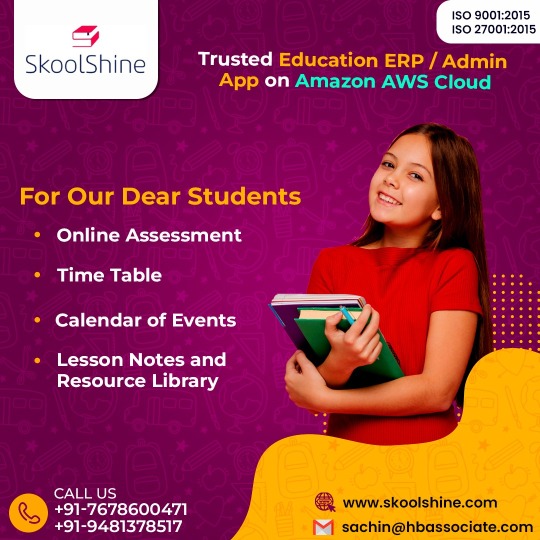
SkoolShine provide secured cloud-based School Administration Software to manage student admissions all the way to student exit with document printing.
For more details visit our website
#school administration software#school online services#student management system#school management app
0 notes
Text
Enhancing Administrative Processes with a Student Management System
Effective communication is essential for every organization to succeed in the fast-paced world of today. In educational institutions, effective communication among students, parents, teachers, and staff is essential to meeting academic objectives and fostering a supportive learning environment. However controlling communication may be difficult, particularly when there are a lot of parties involved. Thankfully, student management systems have made this process easier thanks to technology.
An essential component of any educational establishment is student administration. Keeping track of student information is a difficult task that calls on accuracy and efficiency in everything from enrollment and admissions to grading and attendance. Software for student administration can be useful in this situation. With the help of sophisticated tools like student management software, educational institutions can concentrate on delivering high-quality instruction and enhancing student results while streamlining numerous administrative procedures.
The School Management System is now necessary for educational institutions due to the shifting demands of the academic period. All educational institutions, including colleges and coaching centres, as well as schools, require some sort of equipment. Systems or software that make their daily tasks easier, or more accurately, simplify them, are referred to as tools.

What a Student Management System Does?
A Student Information Management System (SIS) is another name for a Student Management System (SMS). All student data is arranged and coordinated by this cutting-edge software through a single, centralized data management system that is available to all departments. Teachers can enter, maintain, and access student data using an on-premise or cloud-based student management system, and the school can comply with regulatory requirements. This all-inclusive software program organizes and maintains administrative procedures and data about students. It serves as a hub for all information about students. Institutions can effectively handle and retrieve data about enrollment, grading, scheduling, reporting, and admissions.
How a student management system elevates administrative tasks:
Enhances communication and collaboration
Save Time
Student Tracking
Handholding of students
Tailored Education Programs
Modernizing Administrative Workflows with SMS
Analyze Student Performances Efficiently
Productivity and Efficient Management
Assists in building a strong alumni
Enhances communication and collaboration:
A student management system facilitates better collaboration and communication among various stakeholders, including parents, students, and teachers. It gives everyone involved a forum for exchanging updates and critical information. For example, parents can use the system to monitor their child's progress and teachers can use it to exchange study materials and tasks with students.
Save Time:
Principals, educators, and even parents may save a great deal of time with this useful tool. The student management system answers the majority of the questions. All of the laborious activities are manageable and stress-free. This can therefore free up the teachers to concentrate on improving the learning opportunities for their students.
Student Tracking:
Education transcends the confines of the classroom. Details about a student's home life are often included, along with information on extracurricular activities like clubs and sports. This data is centrally stored via a student management system, which makes it much easier for teachers to monitor their pupils and spot when one is having difficulties.
Handholding of students:
Providing timely and individualized student support services can be facilitated by utilizing a student management system. By managing each student's academic and personal data, this system enables mentors, teachers, and administrators to provide them with individualized guidance based on their requirements.
With this method in place, teachers can keep a close eye on their students' development and ensure that they are staying ahead of any obstacles they face over the academic year. This system's student handholding benefits parents as well as teachers since it allows parents to monitor their children's growth and take an active role in choosing their children's educational paths.
Tailored Education Programs:
One of the main advantages of student management systems is their contribution to personalized learning. SMS provides vital information about each student's unique learning needs, preferences, and progress by gathering and analyzing student data. To assist students get better, teachers can utilize this information to modify learning assignments, provide specialized support, and tailor training. Additionally, SMS can be integrated with learning management systems (LMS), giving instructors the ability to create dynamic and flexible lesson plans that accommodate different student requirements and preferences.
Analyze Student Performances Efficiently:
Educators need student information for lesson planning. Why? It gives them clear insight on which students need one-on-one attention, and analyzes their overall performance accurately. Understanding a student’s performance is crucial as an educator. Having access to a student information system that stores information regarding their attendance, grades, assignments, homework, and behaviour reports helps in making their classes productive.
Productivity and Efficient Management:
The productivity of an organization is increased by the student management software or system. The primary drivers of this productivity enhancement are lower maintenance time for track records and more accurate data organization. With less time, the school may concentrate more on increasing organizational productivity and raising the standard of instruction given to students.
Assists in building a strong alumni:
Having a robust student management system makes it easier to expand the alumni network. All educational establishments, including colleges and schools, must effectively manage their alumni network. A network like this can assist the institution with finance, student employment recommendations, and other things. The SMS software can handle your alumni connections with ease and help you create an alumni network. Any future attempts can utilize the centralized and integrated alumni data.
Modernizing Administrative Workflows with SMS:
School administration systems bring about significant savings in labour costs and boost efficiency through their ability to automate various administrative tasks. With features like grading, report generation, attendance tracking, and enrollment management, the student management system streamlines operations and minimizes the chances of errors and redundant data entry.
Conclusion:
The market for student management system software is expanding quickly, offering more chances for interaction between instructors, administrators, and students. Thanks to the constantly improving technology of student management systems, educational institutions may offer enhanced access to student data and facilitate the development of a more customized learning environment. The student management software solution improves the organization's overall productivity and student experience by removing the burden of maintaining operational efficiency across departments. Thus, begin implementing student management software to advance your educational institution!
0 notes
Text
What is the significance of student management system?
The student management system holds great significance in educational institutions as it is a comprehensive software solution designed to streamline and automate various administrative tasks related to student information and academic records. It serves as a centralized database where all relevant information about students can be stored, managed, and accessed efficiently.

Here are some key aspects that highlight the significance of a student management system:
Student Information Management: A student management system allows educational institutions to maintain a complete record of student information, including personal details, contact information, enrollment history, attendance records, grades, and more. This centralized repository enables easy access to accurate and up-to-date information, facilitating effective communication and decision-making.
Enrollment and Admission Processes: Managing student admissions and enrollment can be complex and time-consuming. A student management system simplifies this process by providing online application forms, document management, and automated workflows. It helps educational institutions efficiently handle the entire admission cycle, from application submission to enrollment, and reduces manual paperwork.
Academic Progress Tracking: The system enables educators to track and analyze students' academic progress over time. It facilitates the recording of grades, assignments, assessments, and exam results. This data can be utilized to generate reports, transcripts, and progress cards, allowing teachers, parents, and administrators to monitor student performance comprehensively.
Attendance Management: Tracking student attendance is crucial for ensuring regularity and identifying potential issues. A student management system streamlines attendance management by automating attendance tracking and generating reports. It provides real-time updates, identifies patterns of irregularity, and supports effective communication with parents or guardians.
Communication and Collaboration: Effective communication between teachers, students, parents, and administrators is essential for a well-functioning educational environment. A student management system provides communication tools such as messaging systems, notifications, and event calendars. It enables seamless collaboration, facilitates parent-teacher interactions, and promotes a strong support system for students.
Timetable and Course Management: The system assists in creating and managing class timetables, ensuring optimal allocation of resources and avoiding scheduling conflicts. It allows institutions to manage course catalogs, class sections, and teacher assignments. Students can access their timetables and course details, making it convenient for them to plan their academic schedules.
Data Analysis and Reporting: A student management system provides tools for generating comprehensive reports and analytics. This data-driven approach assists educational institutions in evaluating student performance, identifying trends, and making informed decisions. It supports educational research, program assessment, and the implementation of data-informed strategies.
Overall, a student management system streamlines administrative tasks, enhances data accuracy, improves communication, and facilitates efficient operations in educational institutions. It empowers stakeholders to focus on the core aspects of education while ensuring effective management of student-related information and processes.
Free Demo for sweedu education management software
#student#studentmanagementsoftware#student management system#schoolsoftware#educationsoftware#software#education#education technology#technology#erpsoftware#schoolerpsoftware
0 notes